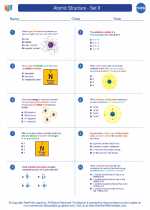Geological Maps
A geological map is a specialized type of map that shows the distribution of various rock types, geological structures, and other features on the Earth's surface. These maps are essential tools for geologists, engineers, and other professionals involved in natural resource exploration, environmental management, and land use planning.
Key Components of Geological Maps
- Rock Units: Geological maps use different colors, patterns, or symbols to represent different types of rock layers. These rock units are labeled with specific names and ages, providing information about their geological history.
- Geological Structures: Features such as faults, folds, and unconformities are depicted on the map to show the deformation and movement of rock layers over time.
- Topographic Information: Geological maps often include contour lines and elevation data to show the topography of the land.
- Legend and Key: These provide explanations for the symbols, colors, and patterns used on the map.
- Scale: The scale of the map is crucial for understanding the size and extent of geological features.
Interpreting Geological Maps
Interpreting a geological map involves understanding the relationships between different rock units, structures, and the overall geological history of an area. Here are some key steps for interpreting geological maps:
- Identify Rock Units: Look for the different colors or patterns on the map and refer to the legend to understand the types of rock present.
- Recognize Geological Structures: Pay attention to symbols or lines indicating faults, folds, and other structural features. These provide insights into the tectonic history of the area.
- Understand Stratigraphy: Study the arrangement of rock layers and their ages to reconstruct the sequence of geological events.
- Consider Topography: The topographic information on the map helps in understanding how the geological features relate to the surface landscape.
- Use Cross-Sections: Many geological maps are accompanied by cross-sectional diagrams that provide a vertical view of the subsurface geology.
Uses of Geological Maps
Geological maps have diverse applications, including:
- Mineral Exploration: Identifying areas with potential mineral deposits based on the geological formations present.
- Engineering Projects: Understanding the geological characteristics of an area for construction, tunneling, and infrastructure development.
- Environmental Studies: Assessing the potential for natural hazards, groundwater resources, and environmental impacts.
- Education and Research: Serving as valuable tools for teaching and conducting geological research.
Study Guide for Geological Maps
To effectively study and understand geological maps, consider the following steps:
- Learn to read and interpret map legends and keys to understand the symbols and colors used on the map.
- Practice identifying different rock units and their ages based on the map's representation.
- Review the basics of geological structures such as faults, folds, and unconformities, and how they are depicted on the map.
- Understand the principles of stratigraphy and how they apply to interpreting the sequence of rock layers.
- Practice integrating topographic information with geological features to understand their spatial relationships.
- Review case studies or real-world examples where geological maps have been used for practical applications.
By mastering the interpretation of geological maps, you can gain valuable insights into the Earth's history and its geological processes, as well as apply this knowledge to various scientific and practical endeavors.
.◂Chemistry Worksheets and Study Guides High School. Atomic Structure - Set II

 Worksheet/Answer key
Worksheet/Answer key
 Worksheet/Answer key
Worksheet/Answer key
